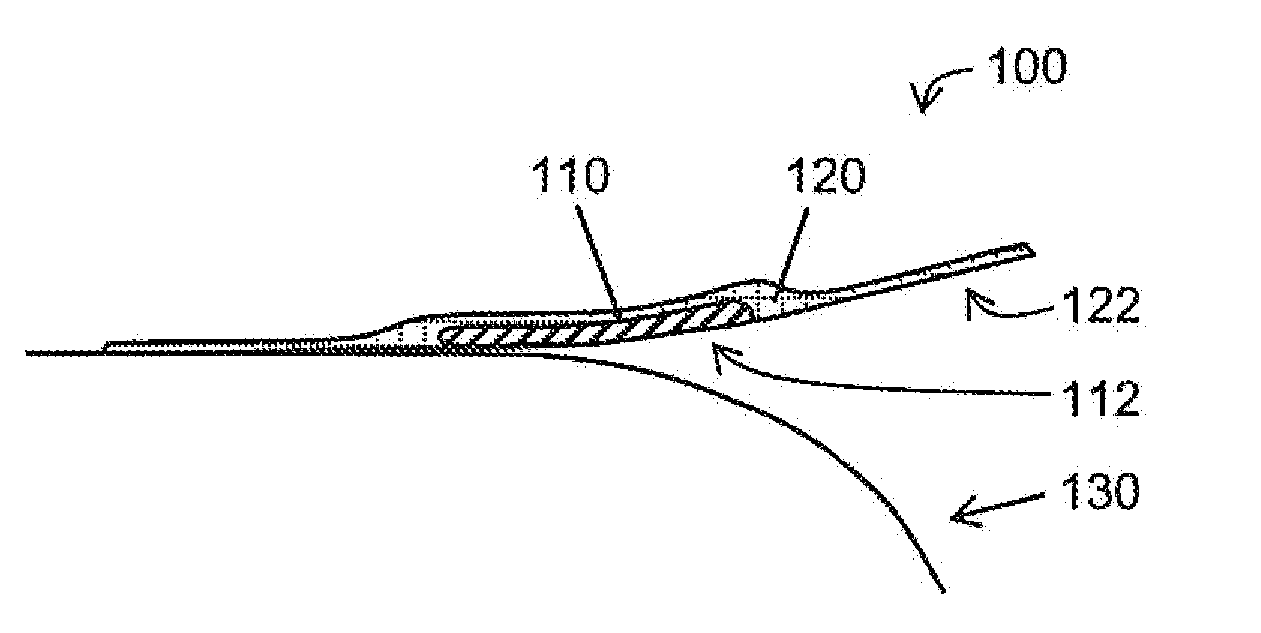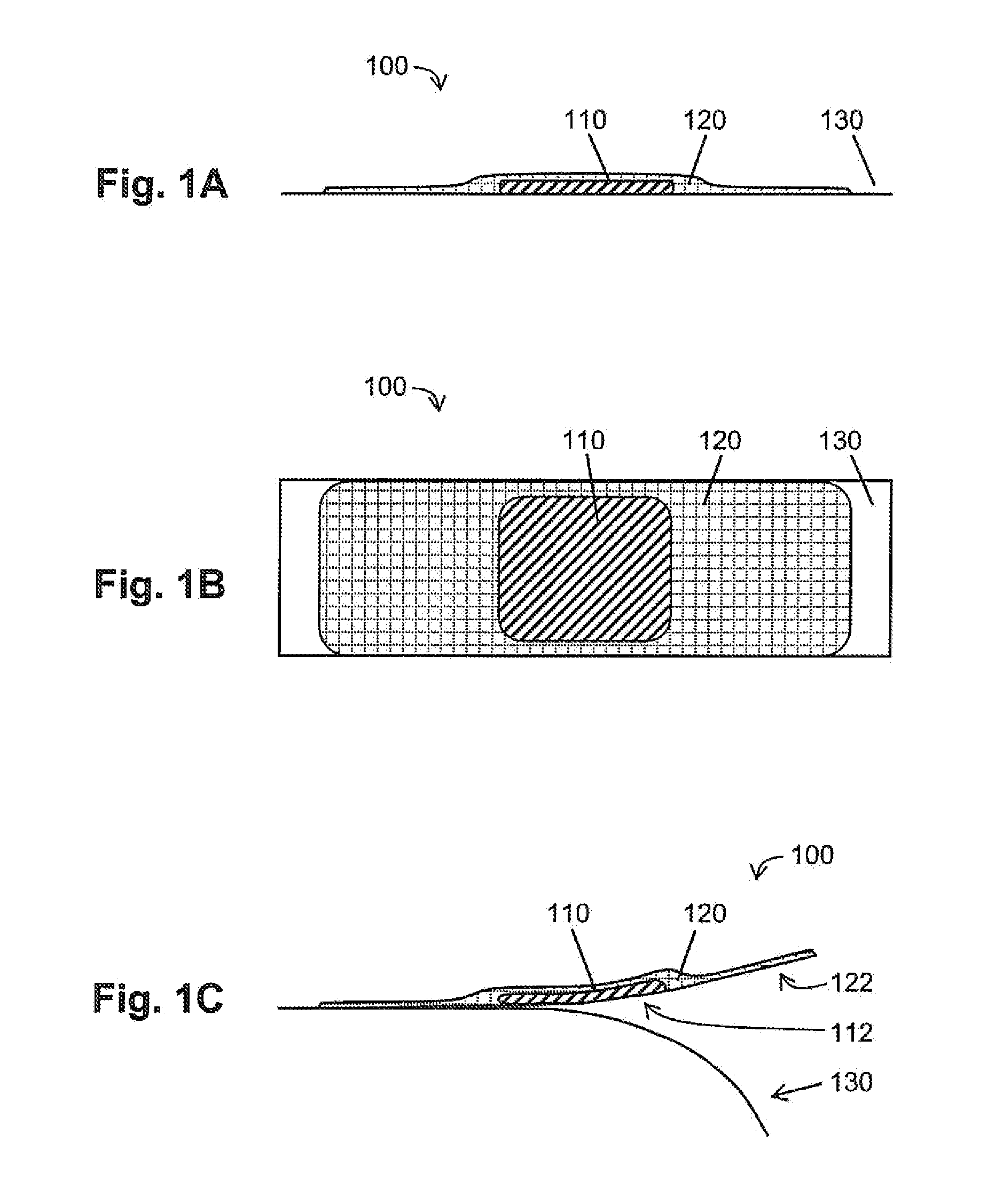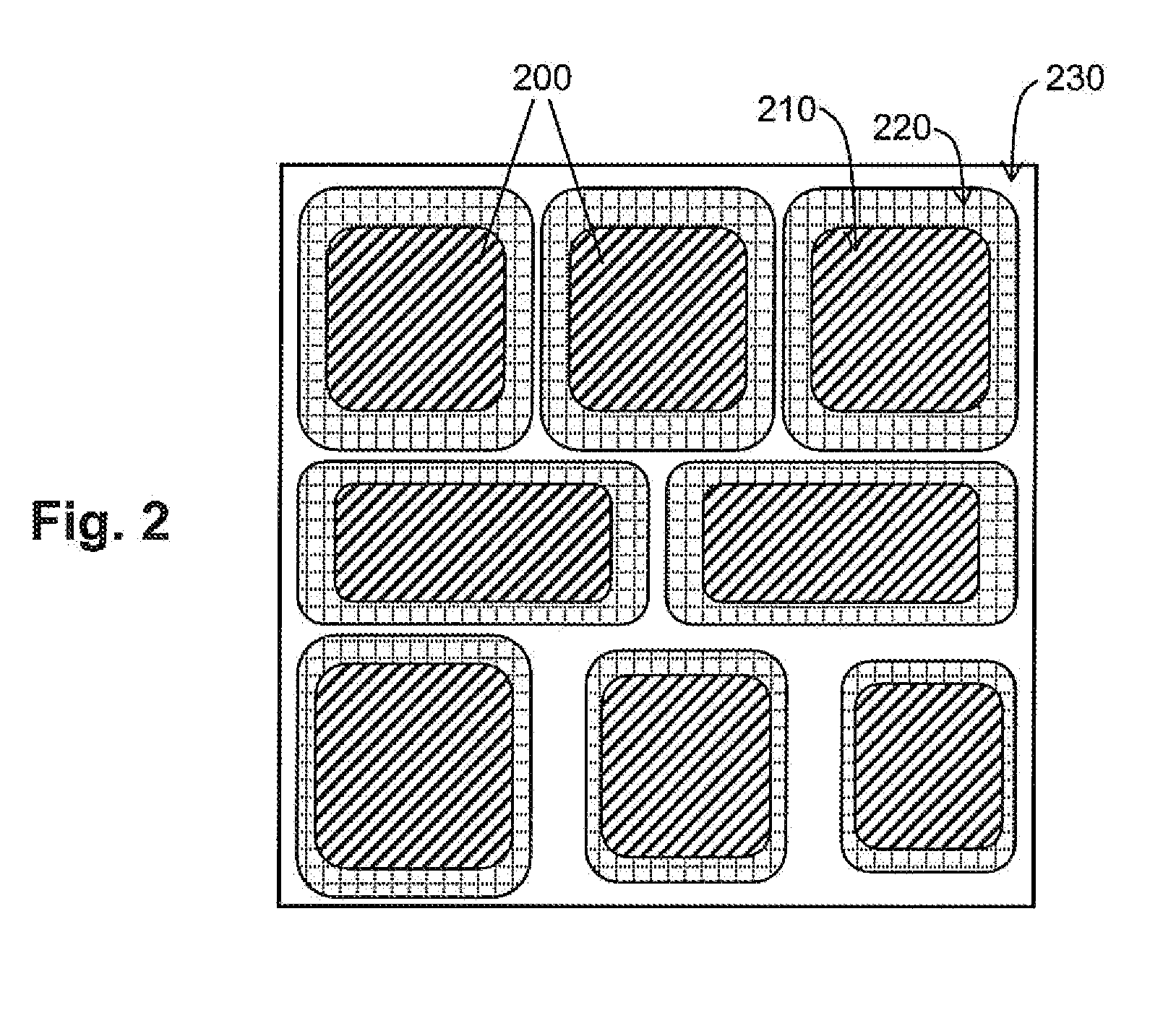Methods of Treating Infections of the Nail or Skin Using Hypohalite
- Summary
- Abstract
- Description
- Claims
- Application Information
AI Technical Summary
Benefits of technology
Problems solved by technology
Method used
Image
Examples
example 1
Paste Formulation
An exemplary composition of a synthetic clay in which about 10% of the magnesium ions are replaced by lithium ions is as follows (amounts reported as dry weight basis):
IngredientAmountSiO260.4%MgO26.0%Li2O 1.1%Na2O 3.0%Fe2O30.02%CaO0.20%SO30.10%CO20.29%H2O 6.9%
Such a formulation may be prepared as follows: about 2000 grams of a buffer solution is prepared from 2.1 grams of sodium hydroxide and 6.6 grams of sodium bicarbonate in distilled water. Of this buffer solution, 1568 grams is heated to boiling and 100 grams of a synthetic magnesium silicate absorptive clay having partial replacement of magnesium by lithium is added with high speed stifling. The mixture is maintained at 95° C. and stifling is continued until all the synthetic clay particles are dispersed. The paste is cooled to 25° C. and a solution of 32 grams of lithium hypochlorite in 300 grams of buffer solution is added. Finally, the pH is adjusted to 10.5 by the slow addition of sodium hydroxide while st...
example 2
Alternative Paste Formulation
A composition is prepared as described in Example 1, but using water in place of the buffer solution, and chloramine T in place of the lithium hypochlorite. The composition contains 0.5% by weight of available chlorine. Sodium hypochlorite and other sources of hypochlorite ion may be also be used.
example 3
0.1% HOCl Gel Formulation
An exemplary gel formulation is prepared by mixing a poly (acrylic acid) with an aqueous hypohalite solution. In this example, 250 ml of a 0.2% HOCl solution at pH 4.5 is made in accordance with U.S. Pat. No. 6,426,066, as described above. About 10 g of Carbopol 676 is used in this example, but other suitable polymers, e.g. Carbopol 974P, may also be used. The polymer is passed through a sieve or strainer to break up any clumps. The polymer is added slowly to 250 ml of purified water and the solution is mixed to promote the powder to dissolve evenly. The aqueous hypohalite solution (e.g. hypochlorite solution, as above) is then added to the polymer solution to result in a 0.1% HOCl gel formulation. Sodium hydroxide or hydrochloric acid may be used if desired to adjust the pH of the final formulation.
PUM
| Property | Measurement | Unit |
|---|---|---|
| Time | aaaaa | aaaaa |
| Fraction | aaaaa | aaaaa |
| Fraction | aaaaa | aaaaa |
Abstract
Description
Claims
Application Information
 Login to View More
Login to View More - R&D
- Intellectual Property
- Life Sciences
- Materials
- Tech Scout
- Unparalleled Data Quality
- Higher Quality Content
- 60% Fewer Hallucinations
Browse by: Latest US Patents, China's latest patents, Technical Efficacy Thesaurus, Application Domain, Technology Topic, Popular Technical Reports.
© 2025 PatSnap. All rights reserved.Legal|Privacy policy|Modern Slavery Act Transparency Statement|Sitemap|About US| Contact US: help@patsnap.com



